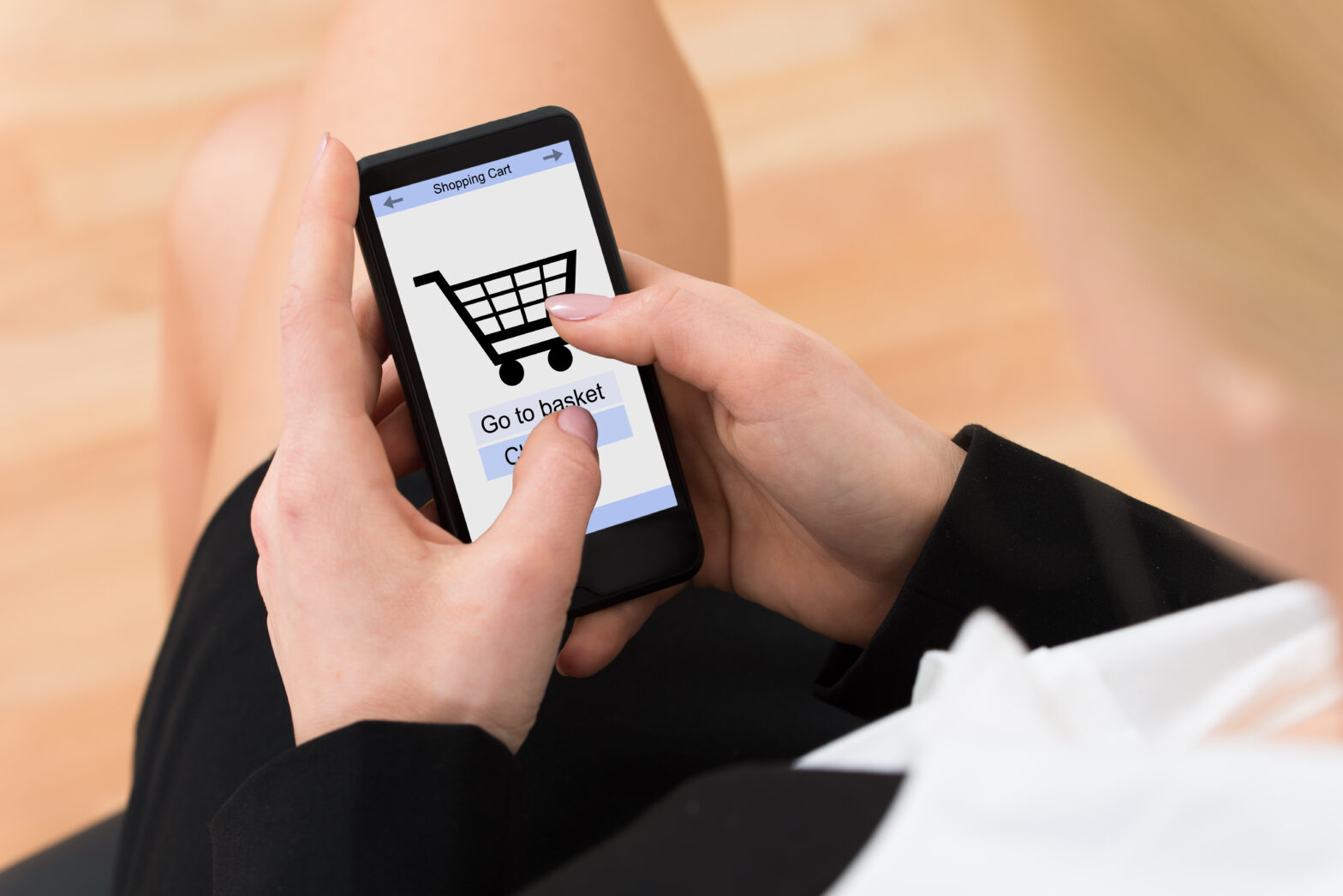Shopping via apps will rise and rise
This is an easy one. It’s a no-brainer that online sales will continue to grow. And mobile’s share of that will continue to rise, as more and more customers adopt a mobile-first strategy.
Predictions of the actual magnitude of this growth vary wildly, with some experts expecting m-commerce to grow by over 200%.
Even many of the more conservative estimates exceed 100%. Whatever happens, it’ll be huge. And mobile apps will deliver a growing percentage of that.
While Web will be the primary platform for discovery, apps will be the platform of choice for loyal, repeat customers.
They offer better communication, better UX, and a much slicker shopping experience, which in turn results in better conversion rates, more customer engagement, and higher sales compared to mobile Web.
>See also: How to gain mobile momentum through contextual commerce
Apps probably won’t surpass mobile Web in 2018, but it’ll definitely get closer, perhaps as much as 40% of m-commerce.
Retailers who aren’t offering mobile sales in 2018 are really going to lose out, and retailers without apps will be missing out on the biggest growth area of all.
Delivery will be a primary deciding factor
Customers aren’t just interested in whether they can find what they want at the price they want. They want more choices on how to actually get their stuff.
Over 80% of customers expect a same-day shipping option, and 65% expect their goods to be shipped within three hours. Importantly, they don’t expect it to cost extra.
Over 60% want a same-day delivery option, while 82% want to be able to buy online and pick up in-store. 45% of customers want to buy in-store and have goods delivered to their home or office.
Currently, less than half of US or European retailers offer any of those options. Meanwhile, Amazon have just announced their first successful drone delivery, with just 13 minutes from order to arrival.
That’s raising the bar for everyone. Retailers who can offer fast shipping with multiple delivery options, preferably free, will enjoy a huge competitive advantage over those who don’t. In 2018 this will become the norm.
Mobile fraud will become more common
The USA has finally begun to adopt secure Chip and PIN technology, which will massively reduce fraud in stores.
This is obviously great news for consumers and retailers, but there’s a hidden downside. Fraudsters will turn their attention towards sales that don’t involve a physical card reader.
Online sales of all sorts will be affected: already there’s been a 26% increase in online fraud in just six months, and mobile fraud can be expected to grow.
>See also: Why retailers should recruit a Chief Omnichannel Officer now
Currently, only 29% of US stores can accept chip cards, which suggests that what we’re seeing is only the beginning.
As old-style swipe cards get phased out, online and mobile fraud will keep rising. As Forrester points out, “Mobile offers fraudsters more options than any other channel.”
2018 will be the year that retailers start to take mobile fraud prevention as seriously as other forms of online security.
Alternative payment systems will become standard
On a related note, customers are becoming wary of making card payments via mobile.
It’s often cumbersome and error-prone, and there are serious security concerns. Instead, they’ll turn in increasing numbers to other forms of payment, especially outside the US and Europe.
WorldPay estimates that payment systems such as PayPal, Apple Pay, Google Wallet, AliPay, MoPay, Square, direct app payments or pre-paid accounts will account for a massive 59% of m-commerce transactions in 2018.
PayPal and AliPay alone will account for almost 40% of worldwide mobile sales.
Mobile abandonment rates exceed 80% when customers are asked to input their credit card details.
If you’re still forcing your mobile customers to use their credit cards in 2018, expect to see them drift away to competitors who offer a safer, easier alternative.
AI-backed systems will start to dominate
AI is no longer science fiction. It’s happening now. Consumers expect shopping sites to be much more than just categorised or a searchable list of products.
They expect sites to know what they want, to make recommendations, to highlight the products they’re looking for, and to interact with them proactively.
>See also: 5 marketing trends to prepare for in 2016
They won’t accept mass email promotions blasted out to everyone: they want personalised, targeted notifications telling them about the products and offers they want to see. And when they have questions, they want answers right away. Email is no longer fast enough or personal enough.
As a result, more and more retailers are turning to smart chatbots for front-line customer support.
They’re not perfect yet, but chatbots can typically handle 80% of all inquiries, which cuts operating costs while allowing human staff to focus on more complex customer service issues.
In 2018, as more artificial intelligence is deployed worldwide they will get smarter, more human-like, and better at delivering increased sales and happier customers.
Sourced by Andreas Hassellöf, founder and CEO, PresenceKit







